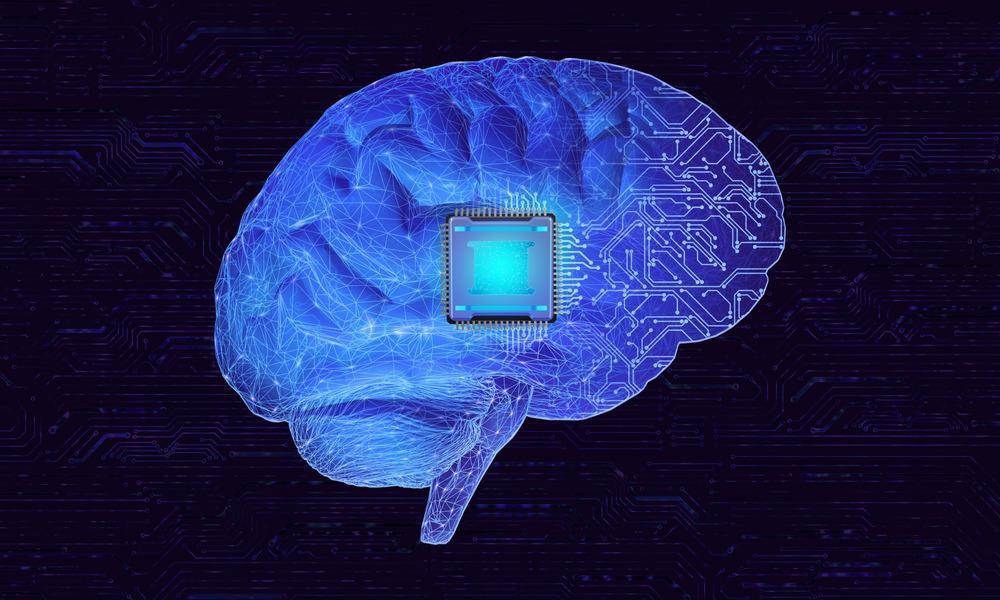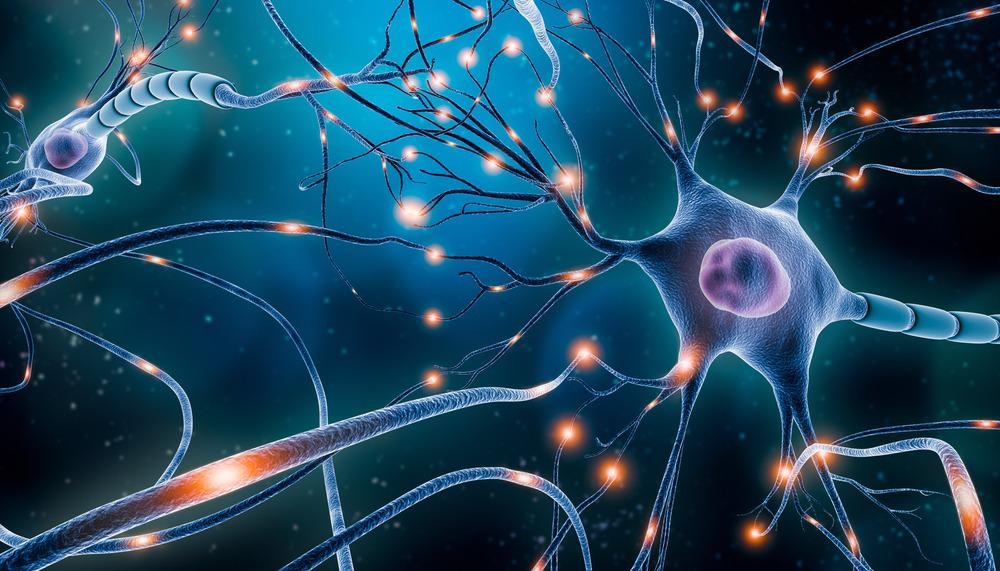Neurons have a significant role in processing information. With developments in microscopy and molecular techniques, their role in brain activity has been explored further. However, therapies for neurological disorders have continued to challenge researchers.

Image Credit: Dana.S/Shutterstock.com
The use of nanotechnology to investigate neural interfaces, such as through nanomaterials that can be used for sensing and modulating neural signaling, may be an avenue to advance this field further. This article will provide an overview of how nanotechnology can be integrated into brain-computer interfaces and the clinical applications of such technologies.
Neurons or nerve cells are part of the nervous system and are usually produced in association with glial cells, which provide a supportive and protected environment for neurons to perform their functions.
These nerve cells, which make up part of the central nervous system along with the spinal cord, brain and retina of the eye, are derived from a portion of the ectoderm which forms the neural tube.
The neural tube consists of a single-layered epithelium, with the epithelial cells being progenitors of neurons and glial cells.
There are approximately 100 billion neurons found within the human brain that function to form near and long-range connections that aim to aid information processing. Their function of sending messages via electrical impulses and chemical signals between the brain and the rest of the central nervous system consists of releasing a neurotransmitter across the synapse, which enables communication from one neuron to the next. The myelin sheath surrounds the nerve and enables electrical impulses to travel along the nerve cell body.
While the history of breakthroughs in this research area was significant for this field, its growth overall can be seen as slow and stunted. The start of this field can be narrowed to the exploration of bioelectricity by Luigi Galvani in the 1790s as well as electrophysiological recordings introduced in the mid-twentieth century that led to scientific theories of ion channels and membrane excitability.
Comprehension of the principles of the nervous system and its impact on brain activity has become a significant objective for biomedical research to aid the treatment of neurological disorders.
Challenges with Analyzing Brain Activity
The complexity of the brain contributes to the lack of full comprehension of its function, reducing the efficacy of therapeutic targets. Its complexity can be ascribed to three components, including (i) the high dimensionality within the brain, (ii) neuronal subcellular structures that can have a range of length scales, from tens of nanometers for synapses to centimeters for axonal projections, (iii) as well as the lack of comprehension of glial cell activity.
These complexities can cause difficulties for researchers to gain insight into the brain with current technologies preventing probing of synapses and axonal projections of varying lengths and with glia, non-neuronal cells that populate the brain with 100 billion cells to regulate neural activity.
Limitations of Current Brain-Computer Interfaces
Advancements in this field have included molecular tools for neuromodulation, which have provided an ability to control the activity of neuronal populations and establish links between neural pathways and behavior.
Conventional tools often involve bulky implantable metal electrodes that can provide the location of seizures while also alleviating Parkinson’s disease symptoms and stimulating nerve growth after injury.
However, the use of these large electrodes compared to cells and nerve fibers can cause neighboring neurons to be activated and result in adverse side effects.
Other limitations include immune activation and glial scar formation after mechanically inserting the large microelectrodes with micromotions into the skull. This can cause displacement from the targeted neurons and reduce the functionality of the device, as well as possibly restructure and affect the function of surrounding neurons.
The lack of minimally invasive tools for probing neuronal systems has resulted in poor comprehension of brain function. Furthermore, the concern for treating neurological diseases and producing preventative measures necessitates lengthy risk assessments. Still, incorporating nanotechnology and associated nanomaterials into abnormal neural activity therapeutics could further advance this field.

Image Credit: MattLphotography/Shutterstock.com
Advancing Electrodes Using Nanotechnology
Interestingly, nanoscale biomaterials may be able to address the challenges and limitations of conventional technologies concerning neural interfaces.
Building blocks within 1 and 100 nm in size enable increased natural interaction with native biological systems and allow electrodes to be packed in a more condensed manner.
These improvements to current medical devices would enhance the resolution of current recording and neuro-modulatory systems. Additionally, with remarkably modifiable properties, nanomaterials can provide characteristics such as flexibility, low stiffness, and stretchability, which may be critical for these devices in close proximity to neurons to ensure their structure and function are not altered.
Ultimately, this would also reduce adverse side effects experienced by patients with the ability to remain unrecognized by the immune system.
With seamless integration into the brain tissue that mimics the structural and mechanical properties of native tissue, nanomaterials hold significant potential in advancing neuronal technology and therapeutics.
Additionally, the ability to probe the local microenvironment would enhance the insight into astrocytes, extracellular matrix, neuronal processes and communication, with further knowledge on how to influence and modify critical pathways for neurological disorders. The role of specific neurons, such as motor neurons, in neurological disorders could also be obtained.
The translation of this research would be revolutionary for a range of neurological diseases such as dementia, epilepsy, Parkinson’s disease, multiple sclerosis and even traumatic brain injuries.
There are approximately one million people that have been diagnosed with Parkinson’s disease within the US and more than 10 million people who are living with this condition globally; however, with reduced knowledge in this area, a lack of effective treatments and cures have been ubiquitous for all neurological disorders.
The use of nanotechnology, which has been proven to develop various fields from electronics to pharmaceuticals, has shown promise and may potentially innovate this slow-moving field with advanced precision medicine.
With further research into harnessing bio-energy within neural systems and sustaining neural interfaces, the potential to regulate and transform electrode-glia systems into a biohybrid system could be revolutionary.
World Cancer Day: How Nanotechnology Became a Cancer Research Staple
Further Reading and References
Acarón Ledesma, H., Li, X., Carvalho-de-Souza, J., Wei, W., Bezanilla, F. and Tian, B., (2019) An atlas of nano-enabled neural interfaces. Nature Nanotechnology, 14(7), pp.645-657. Available at: https://doi.org/10.1038/s41565-019-0487-x
Alberts B, Johnson A, Lewis J, et al. Molecular Biology of the Cell. 4th edition. New York: Garland Science; 2002. Neural Development. Available from: https://www.ncbi.nlm.nih.gov/books/NBK26814/
Kyle, S. and Saha, S., (2014) Nanotechnology for the Detection and Therapy of Stroke. Advanced Healthcare Materials, 3(11), pp.1703-1720. https://doi.org/10.1002/adhm.201400009
Liu, S., Zhao, Y., Hao, W., Zhang, X. and Ming, D., (2020) Micro- and nanotechnology for neural electrode-tissue interfaces. Biosensors and Bioelectronics, 170, p.112645. https://doi.org/10.1016/j.bios.2020.112645
Ninds.nih.gov. (2022) Brain Basics: The Life and Death of a Neuron | National Institute of Neurological Disorders and Stroke. [online] Available at: https://www.ninds.nih.gov/Disorders/Patient-Caregiver-Education/Life-and-Death-Neuron
Who.int. (2022) Neurological Disorders Public Health Challenges. [online] Available at: https://www.who.int/publications/i/item/9789241563369
Disclaimer: The views expressed here are those of the author expressed in their private capacity and do not necessarily represent the views of AZoM.com Limited T/A AZoNetwork the owner and operator of this website. This disclaimer forms part of the Terms and conditions of use of this website.